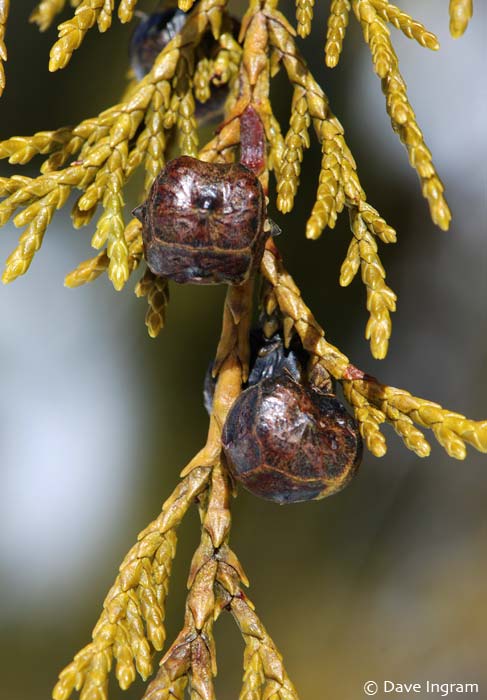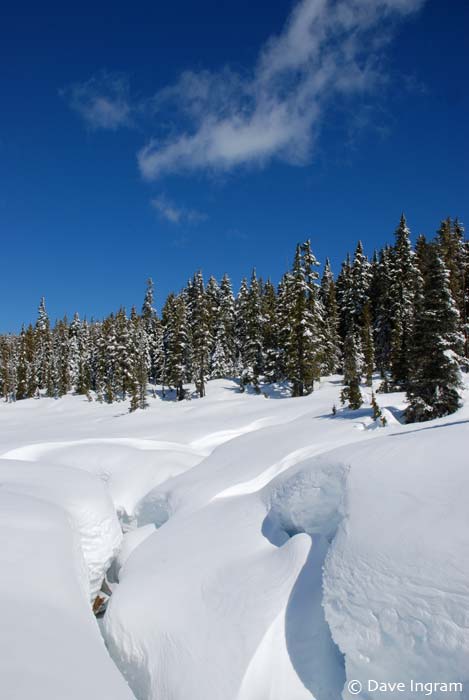
There’s been so much snow this winter at Mount Washington Alpine Resort on Vancouver Island that “spring” skiing conditions are still quite good. I got up to the mountain on Thursday this week and did some cross country skiing. The weather was perfect, around -2o C, and the sunshine was brilliant. I think that the best part of the day was the fact that there were so few people around, during a couple of hours of skiing I counted perhaps less than a half dozen people.
The cross country trails enter Strathcona Provincial Park and provide an excellent opportunity to see Paradise Meadows from a different perspective. Without the distraction of meadows of wildflowers and sub-alpine birds (there were a few Dark-eyed Juncos and Gray Jays around), the blanket of snow forces one to focus on the trees. In addition, the depth of the snow enables you to get quite close to cones that may be out of reach during the spring and summer.
Mountain Hemlock
One of the trees that I photographed was the Mountain Hemlock (Tsuga mertensiana). This subalpine hemlock has much larger cones (3 to 8 cm) than those of the often lower elevation Western Hemlock (Tsuga heterophylla). Its needles are equal in length and cover the branch on all sides (as opposed to T. heterophylla which has irregular needles that lie flat in a feathery spray). The Mountain Hemlock is less shade tolerant than Western Hemlock and when they are found together the former often makes up the canopy while the latter dominates the understory.

Yellow Cedar
The second tree that I photographed was Yellow Cedar (Chamaecyparis nootkatensis). This tree is similar to Red Cedar (Thuja plicata) in that it has scale-like leaves (although they are arranged differently). However, the branches of Yellow Cedar tend to hang vertically, somewhat like curtains. While the bark of Yellow Cedar is in vertical strips it doesn’t tear off in long strips like Red Cedar. The cones of Yellow Cedar are very different from Red Cedar. They are round in shape and initially greenish in colour, eventually forming cones that look like wooden berries.

If you’re on Vancouver Island and skiing at Mount Washington look for Mountain Hemlock and Yellow Cedar while you’re enjoying deep snow pack and the exceptional spring season.
Further Reading:
- Alice over at Exploring the Matrix explains how climate change has a negative affect on Yellow Cedar
